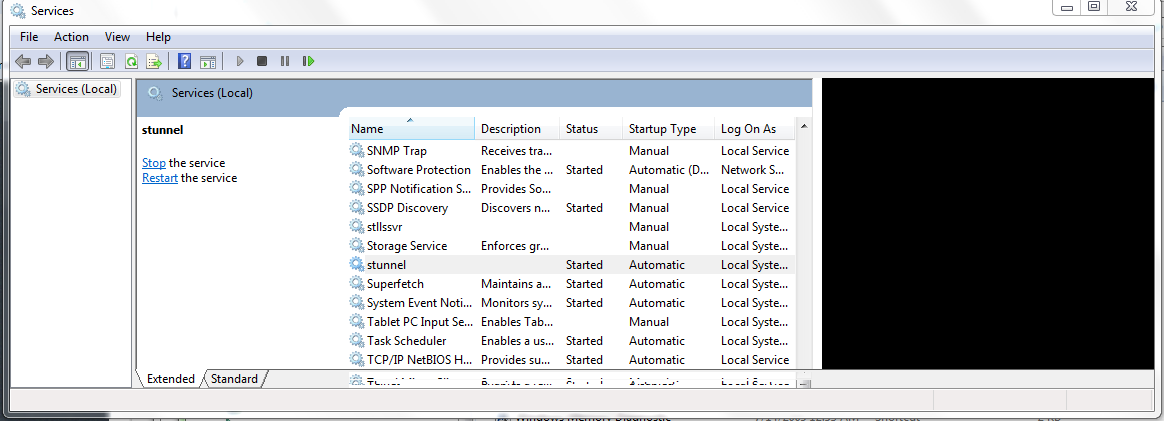

This can be done by creating a new file nf under /etc/stunnel/ directory: Now we have to configure stunnel to tunnel 443(https) to 22(ssh). server FQDN or YOUR name) : Įmail Address : # cat stunnel.crt stunnel.key > stunnel.pem Organizational Unit Name (eg, section) :TechnicalĬommon Name (e.g. Organization Name (eg, company) : unixmen State or Province Name (full name) : Tamilnadu If you enter '.', the field will be left blank. There are quite a few fields but you can leave some blankįor some fields there will be a default value, What you are about to enter is what is called a Distinguished Name or a DN. You are about to be asked to enter information that will be incorporated You will be asked to answer for a couple of questions such as Country, State, company details etc. Sample output: Generating RSA private key, 1024 bit long modulus Now let us create a SSL certificate as shown below.
#STUNNEL WINDOWS 7 INSTALL#
As an open source project, you are free to view the source code and distribute this software application freely.Let us install stunnel package in our remote Debian 7 server.
#STUNNEL WINDOWS 7 DOWNLOAD#
Stunnel 5.65 is available to all software users as a free download for Windows.
#STUNNEL WINDOWS 7 PC#
This download is licensed as freeware for the Windows (32-bit and 64-bit) operating system on a laptop or desktop PC from servers without restrictions. PFS (Perfect Forward Secrecy) with DH and ECDH key agreement.SNI (Server Name Indication) support for name-based virtual servers.Load sharing among multiple backend servers.Although distributed under GNU GPL version 2 or later with OpenSSL exception, stunnel is not a community project. Stunnel is a free software authored by Michal Trojnara. The FIPS mode of operation is no longer enabled by default since stunnel 5.00. The Windows binary installer is compiled with FIPS 140-2 support. A scanned FIPS 140-2 Validation Certificate document is available for download on the NIST web page. Stunnel can benefit from FIPS 140-2 validation of the OpenSSL FIPS Object Module, as long as the building process meets its Security Policy.

Stunnel uses the OpenSSL library for cryptography, so it supports whatever cryptographic algorithms are compiled into the library. It can be used to add SSL functionality to commonly used inetd daemons like POP2, POP3, and IMAP servers without any changes in the programs' code.

The stunnel program is designed to work as an SSL encryption wrapper between remote client and local (inetd-startable) or remote server. Adds a layer of SSL encryption between clients and local servers


 0 kommentar(er)
0 kommentar(er)
